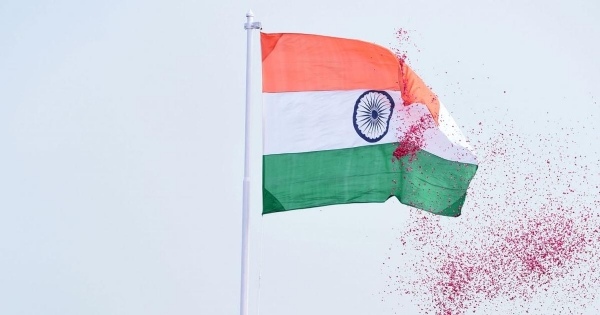Why We 'Hoist' Tiranga On Independence Day But 'Unfurl' It On Republic Day?
Though there is a difference between unfurling Tiranga on Republic Day and hoisting it on Independence Day, it has a very deep meaning that every Indian should know
Total Views |
Our Tiranga soars high on Independence Day as well as Republic Day. However, there are significant differences between the two because the Prime Minister of India 'hoists' the Tiranga, whereas the President of India 'unfurls' it. Know them-

On August 15, 2022, we will celebrate our 75th Independence Day with the theme being 'Azadi Ka Amrit Mahotsav'. Our Tiranga will be "hoisted" at the Red Fort in New Delhi by Prime Minister of India, Narendra Modi in a ceremonial celebration of Independence Day. But, before you witness the live telecast the Independence Day celebration at Lal Qila, here are a few things to know about our national flag - the tricolour.
First of all, for every Indian Independence Day and Republic Day are two fundamentally days. While our Independence Day celebrates freedom from British Rule, Republic Day commemorates the constitution coming into force. Apparently, one can see Tiranga appears everywhere on these two occasions.
But, did you know that the Indian flag is 'hoisted' on Independence Day on August 15, and 'unfurled' on Republic Day on January 26?
A difference in unfurling and hoisting lies in the positioning of the flag. On Independence Day, our Tiranga is tied to the bottom of the flagstaff and hoisted up the pole. This is to mark India's rise as an independent country which means an end to the freedom struggle & the end of British rule.
However, on Republic Day, the flag is tied at the tip of the flag pole and is then unfurled which signifies that India is already independent. By this time i.e. on January 26, 1950, India declared itself a sovereign, democratic and republic state. So, the flag’s position at the top of the flagpole is indicative of that.
The Prime Minister, as head of the government, hoists the Tiranga while the President, as the constitutional head i.e. the first citizen of India, unfurls the Tiranga.
It is pertinent to mention that before January 26, 1950, the Prime Minister used to be the head of state. So, Pandit Jawaharlal Nehru was the designated person. But, India’s first President, Dr Rajendra Prasad only took office the day the Constitution came into effect and unfurled the national flag for the first time in 1950.
While the hoisting takes place at Red Fort, the unfurling is done at Rajpath.
Though the difference between the two ceremonies is minor, it has a very deep meaning that every Indian should know.


